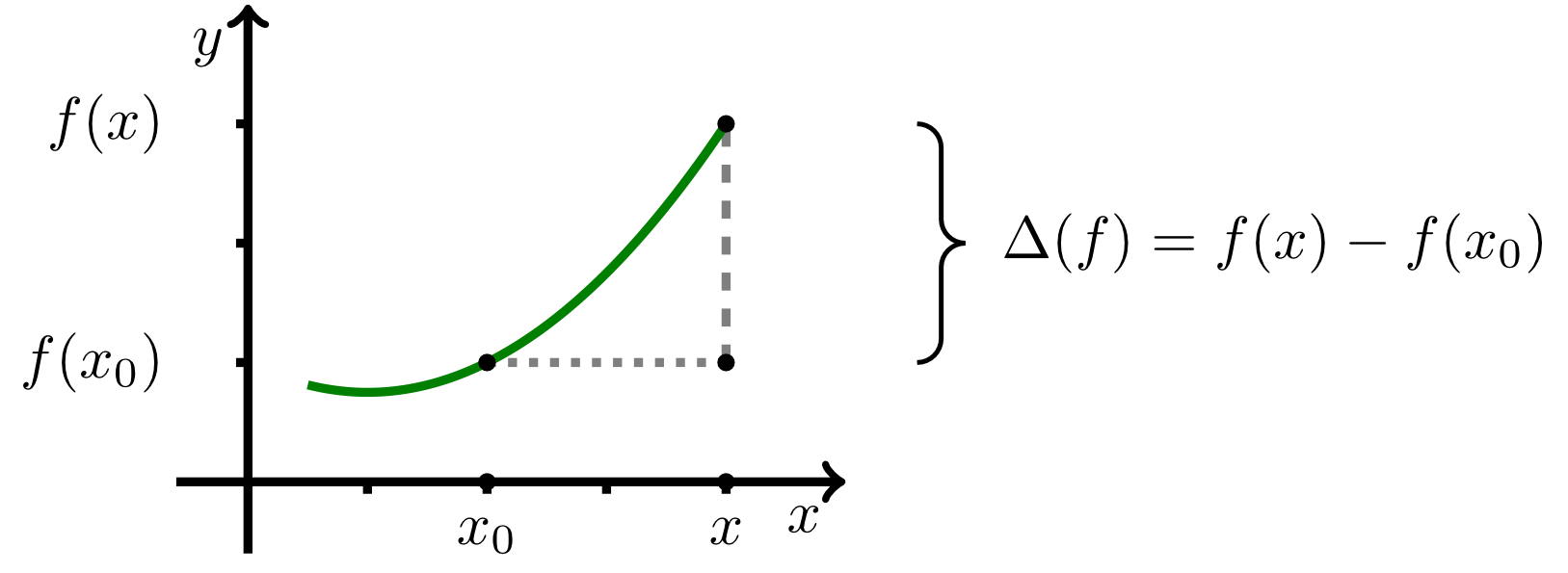Chapter 7 Differential Calculus
Section 7.1 Derivative of a Function7.1.2 Relative Rate of Change of a Function
Consider a function , and a sketch of the graph of (shown in the figure below). We would like to describe the rate of change of this function at an arbitrary point between and . This will lead us to the notion of a derivative of a function. Generally, calculation rules are to be applied that are as simple as possible.
If and the corresponding function value are fixed and another arbitrary, but variable point between and as well as the corresponding function value are chosen, then through these two points, i.e. the points and , a line can be drawn that is characterised by its slope and its -intercept. For the slope of this line one obtains the so-called difference quotient
that describes how the function values of between and change on average. Thus, an average rate of change of the function on the interval is found. This quotient is also called relative change.
If we let the variable point approach the point , then we see that the line that intersects the graph of the function in the points and gradually becomes a tangent line to the graph in the point . In this way, the rate of change of the function - or the slope of the graph of - at the point itself can be determined. If the approaching process of to described above leads to, figuratively speaking, a unique tangent line (i.e. a line with a unique slope that, in particular, must not be infinity), then in mathematical terms one says that the limit of the difference quotient does exist. This limiting process, i.e. letting approach , is described here and in the following by the symbol
where is an abbreviation for the Latin word limes, meaning "border" or "boundary". If the limit of the difference quotient exists, then
denotes the value of the derivative of at . The function is then said to be differentiable at the point .
Example 7.1.1
For the function the relative change at the point is given by
If approaches , this results in the limit
The value of the derivative of the function at the point is denoted by .
If approaches , this results in the limit
The value of the derivative of the function at the point is denoted by .
Exercise 7.1.2
Consider the function with and a point . At this point, the relative change for a real value of equals .
Calculate the quotient directly without using any differentiation rules and other rules known from school.
If approaches , this results in the slope
of the graph of the function at the point .
Calculate the quotient directly without using any differentiation rules and other rules known from school.
If approaches , this results in the slope
of the graph of the function at the point .
Using the formula for the relative rate of change, calculating the derivative can be very cumbersome and also only works for very simple functions. Typically, the derivative is determined by applying calculation rules and inserting known derivatives for the individual terms.
 Onlinebrückenkurs Mathematik
Onlinebrückenkurs Mathematik
